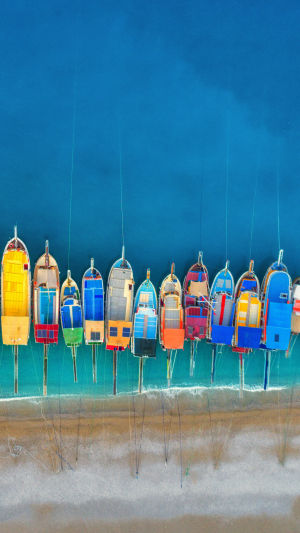Photographing the sea is about more than just snapping a picture of water and sky—it's about creating a captivating visual story.
With the right techniques, anyone can turn an ordinary view into a breathtaking seascape. Whether you're a beginner or an experienced photographer, these tips will help you nail the perfect shot.
<h3>1. Timing is Everything: Light and Mood</h3>
Seascape photography thrives on beautiful lighting, and nothing beats the magic of dawn or dusk. The early morning and late evening hours offer soft, golden light that adds warmth and enhances the textures of the sea and sky. During these times, shadows are longer, and the scene feels more dynamic and rich in color.
Avoid shooting in the harsh midday sun, which tends to flatten the scene and wash out details. However, the diffused light can create a moody and dramatic atmosphere on cloudy days, with soft contrasts that make your photo more artistic and inviting. The right weather can transform a scene, so keep an eye on the forecast!
Trying NEW Techniques | SEASCAPE PHOTOGRAPHY | 100-400mm & 16-35mm
Video by Michael Shainblum
<h3>2. Crafting a Strong Composition: Balance and Flow</h3>
A well-composed photo is what separates an ordinary snapshot from a masterpiece. To create an appealing composition, think about how to balance the elements in your frame. One tried-and-true technique is to break your image into sections. Imagine splitting the frame into thirds, horizontally and vertically, and placing key elements—like the horizon—on these lines to make the shot feel balanced and dynamic.
To guide your viewer's eye through the photo, look for natural lines in the environment. Elements like a sandy shoreline, the curve of the waves, or a boardwalk can help direct attention through the scene, making the photograph feel more immersive and full of life. Include interesting objects, like rocks or driftwood, in the foreground to add dimension.
<h3>3. Capture the Motion: Waves and Water</h3>
The sea is always moving, and that motion can bring life to your photograph. Playing with different shutter speeds can dramatically alter the feel of your image. For example, a fast shutter speed will freeze a crashing wave mid-air, while a slower shutter speed can create a dreamy, silky effect, making the water look smooth and serene.
To get that blurred effect on the water, set your camera to a slow shutter speed—something like 1 to 2 seconds—and use a tripod to avoid any camera shake. This technique can transform a chaotic ocean into a peaceful, ethereal scene.
<h3>4. Ships at Sea: Adding Depth and Drama</h3>
Including ships in your seascape photos can add interest and a sense of scale. A small boat drifting across a vast ocean can create feelings of solitude or adventure, while a ship closer to the shore can add depth to the composition.
If the boat is far away, let it be a small detail in the overall frame, emphasizing the vastness of the ocean. For ships closer to shore, use them as a focal point, guiding the viewer's gaze through the scene. Ships help break the monotony of the ocean's expanse, adding narrative and balance to the photo.
<h3>5. Perfecting Your Gear: Filters and Lenses</h3>
Elevating your seascape shots can be as simple as using the right tools. A polarizing filter, for example, can reduce reflections on the water, deepen the colors of the sea, and bring out the vibrant blues in the sky. If you're shooting in very bright conditions, a neutral density (ND) filter can help you slow down the shutter speed without overexposing your image, perfect for capturing those silky smooth water effects.
As for lenses, a wide-angle lens is often the go-to choice for seascapes, as it allows you to capture the vastness of the ocean and sky. But don't hesitate to experiment with a telephoto lens to zoom in on ships or waves in the distance, adding variety to your shots.
Photographing a seascape is an exercise in creativity, balance, and patience. With the right timing, thoughtful composition, and attention to detail, you can capture the serene beauty of the ocean in a way that tells a story. Get out there, experiment with lighting, and let the sea inspire you to create stunning photos!





